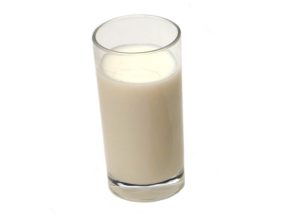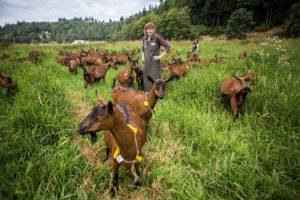Despite performing a crime by breaking and entering into a home, being picky ended up serving Goldilocks well. She got her perfect bowl of porridge, the perfect chair to sit in and the perfect bed for an afternoon nap. At the end of the day, she also got off scot free without getting mauled by a bear.
What does any of this have to do with dairy farming? Well, dairy farmers need to act more like Goldilocks and be picky, too. Whether it be choosing the perfect ration, the perfect bedding material, or in this case, the perfect dry period.
In a recent William H. Miner Agricultural Research Institute Farm report, Patrick Zang, a dairy research scientist, noted the traditional 60-day dry period the majority of U.S. dairy farmers use was first adopted during World War II. For many, the 60-day dry period was the perfect fit. It wasn’t too long, nor was it too short, but does that still hold true today?
“Recently, shorter dry periods have been suggested as a new management strategy to improve dairy cows’ health and fertility,” Zang says. “Cows with a shorter dry period partly shift milk yield from postcalving to precalving and subsequently reduce the severity of negative energy balance after parturition. Shortening the dry period may also simplify management procedures, decrease pressures on cows, and reduce feed and labor costs.”
Throughout the past decade, numerous studies were conducted in the Netherlands to determine the effect a shorter dry period has on milk production. These dry periods lasted only 25 to 35 days but resulted in an average loss of 3 lb. per day in milk yield.
So why would you want to shorten the dry period if you knew you were going to take a hit on milk production during the next lactation?
According to Zang, though milk yield in the subsequent lactation decreased in cows with shorter dry periods, milk yield losses were partly compensated by additional milk produced during the previously extended lactation. Additionally, the study reported milk protein concentration increased and ketosis incidence decreased for shorter dry periods relative to conventional dry periods.
Other studies have shown shortening the dry period to less than 60 days might be beneficial in multiparous and over conditioned cows because it can improve energy balance before calving. Furthermore, shorter dry periods have been associated with improved feed intake, increased ruminal function and shorter calving intervals.
However, this does not mean a shorter dry period is the perfect fit for every cow.
While tacking on additional days to a cow’s lactation period could help generate more income per cow per lactation, they can also tack on other health issues before and after calving. For example, excessive energy intake before calving for more mature animals could result in difficult calving and could also lead to an increase in somatic cell counts.
Though shortening the dry period shifts milk production from the critical period after calving to the weeks before calving, it’s important to evaluate each animal to make sure she is a candidate for a modified dry period. Factors to keep in mind include:
- Primiparous animals (replacement heifers) should always be given a 60-day dry period.
- Second-lactation and some multiparous animals usually make the best candidates for shorter dry periods depending on body condition score and underlying health issues.
So, the next time Bessie needs to go dry, try treating her like Goldilocks. A customized dry period could improve her metabolic status and overall energy balance while minimizing milk losses.













